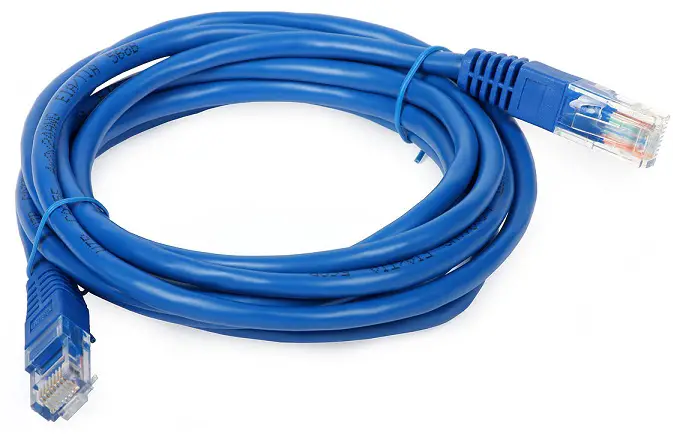There were several wired technologies used for decades of network. Some are still in use and they are still evolving. The most common is Ethernet over twisted pair copper wires. By the time of Wi-Fi debut, 10Mbps over Cat3 cables and 100Mbps ("fast ethernet") over Cat5 cables, with RJ-45 or 8C8P Modular connector, using either hubs or switches were of common use. Speed up to 10Gbps are available today and 40Gbps is under development.
Variants were used: StarLAN (1Mbps) and LattisNet (10Mbps) used the same wire cables and connectors, but they were incompatible.

Before Twisted Pair, thin Ethernet cable called 10BASE2 was almost standard for small networks; coaxial 50 Ω cable segments run between stations, connected with BNC T-connectors, for a total extension of up to 185m (607ft) and up to 30 stations.
Two cables with a T-connector; the T-connector would be attached to a transceiver (usually, but not always, built into the network board) without any other cable
Now, since this bus is shared, any interruption or short at any point of the cable would cause all communication to be interrupted. This makes this type of network specially vulnerable to janitorial or maid services, since the connection usually would not resist a vigorous broom swept!
Various creative solutions were created to avoid this problems.
Before "thin" (5mm) ethernet, there was the original "thick" (9.5mm) ethernet cable, 10BASE5, using RG-8 Coaxial cable. This cable, uninterrupted for up to 500m, could receive up to 100 stations. The cable would be "bitten" by "vampire" taps (or N-Connectors) at specific points 2.5m apart (marked in the cable), where a transceiver were attached and an AUI (Attachment Unit Interface) cable sent the signal to the station. The thick ethernet cable also had to be ended by 50 Ω terminators.
| AUI connectors |
Despite their fragility and obsolescence, this coaxial cables are still in use in some situations. They are incredible resistant to harsh environmental conditions and don't need a central hub or switch to operate.
Credit Paulo Sedrez

